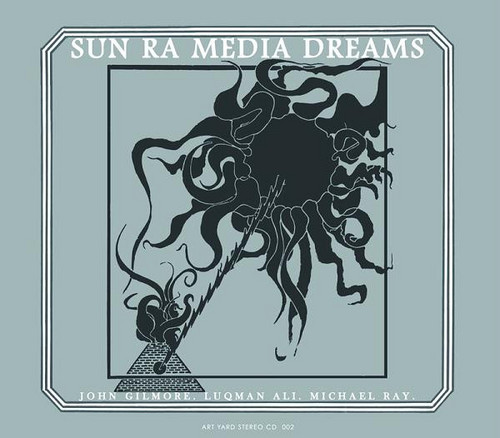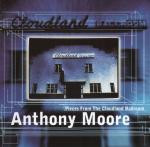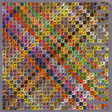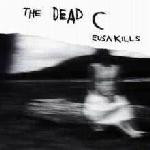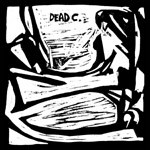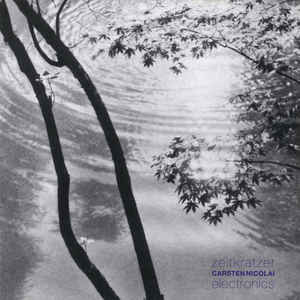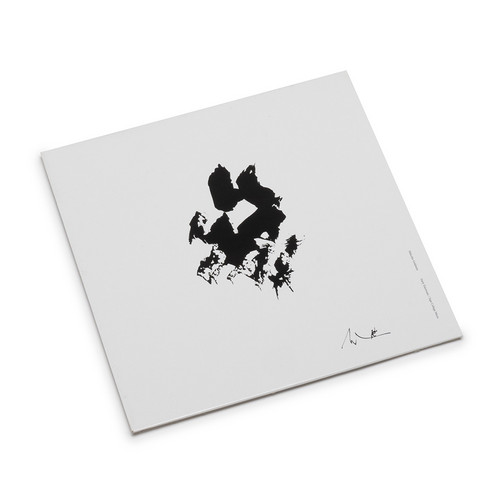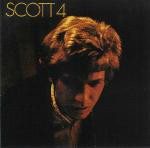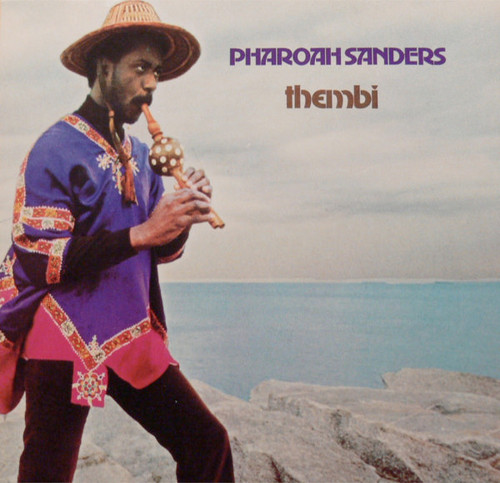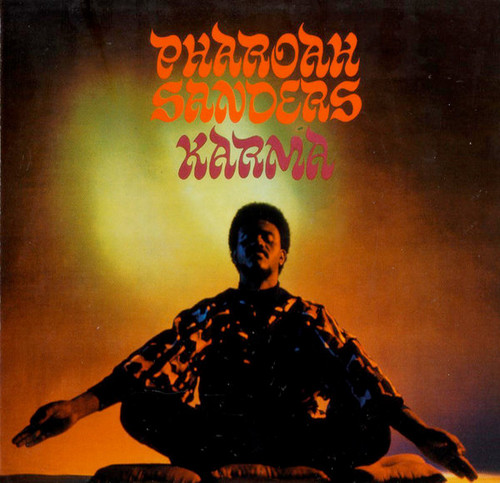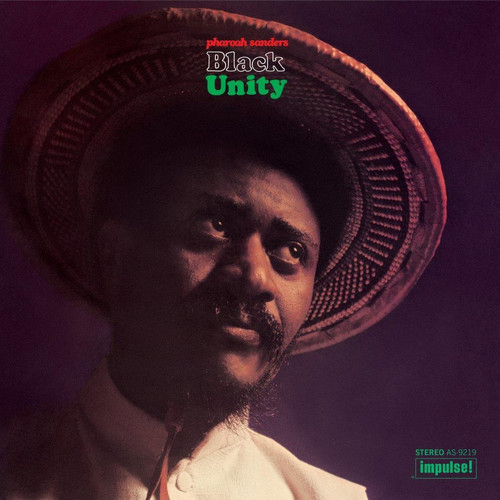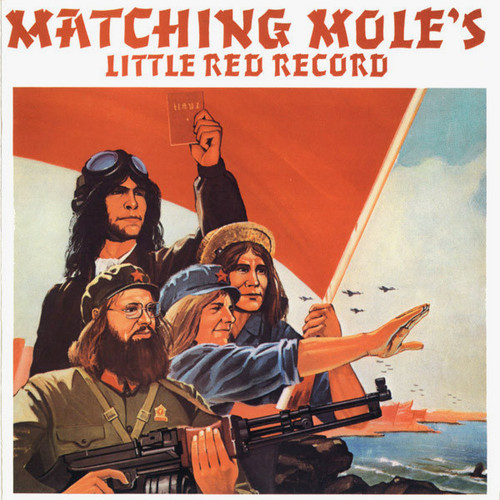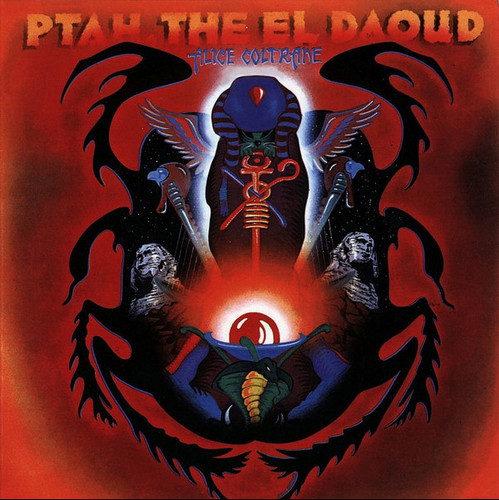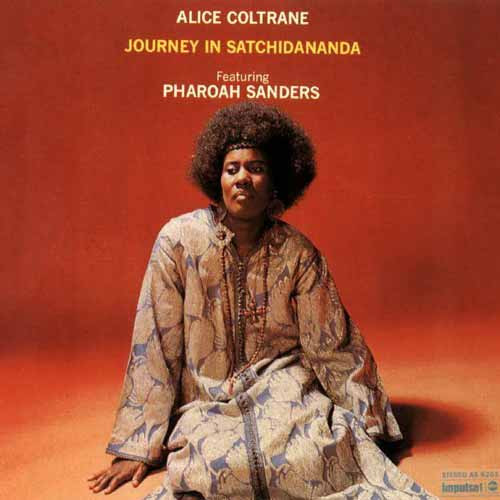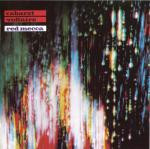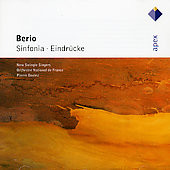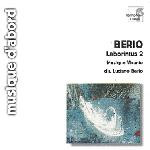Reissues
Media Dreams
This is the companion to Disco 3000, made on the same classic Italian quartet tour with John Gilmore, Michael Ray (trumpet) and the minimal but perfect Luqman Ali (drums). Ra himself plays piano and electronic keyboards, including the mysterious Crumar Mainman, which Ra describes as 'like a piano, organ, clavichord, cello, violin and brass instruments' and which also, importantly, has a facility for pre-programmed bass lines and electronic percussion, which Ra uses constantly and to great effect…
Pieces From The Cloudland Ballroom
Crucial reissues of the first two Anthony Moore solo albums from 1971/72. Originally issued by German Polydor (part of the same program that gave us the first Faust recordings), these were briefly reissued on CD by Japanese Polydor in 1995, but were instantly deleted. So now they are commonly available for the first time, the only negative being that Blueprint's packaging is quite generic & uninspired, with no credits and only tiny new liner notes from Mr. Moore which detail the compositional in…
Criss X Cross
this legendary album was recorded in 1979 and has been the stuff of legend ever since, so it is great to finally hear it in all it’s glory. A crucial, early concert that was beautifully recorded live in the Sorbonne Cathedral of Paris in 1979 and remains one of the most brilliant examples of Gibson's unique and hypnotic solo performances. I must say there is an element to this music which sounds beautifully theatrical, like the most wonderful, mysterious piece of theatre you could ever wish to s…
Eusa kills - Helen said this
The second in a series of Dead C reissue collaborations between Jagjaguwar and Ba Da Bing, Eusa Kills has been pressed on vinyl for the first time in years, along with the Helen Said This 12-inch as a bonus record. Eusa Kills is The Dead C's second album from 1989, released by Flying Nun, the arbiter of the time for all that mattered in New Zealand rock. Considered by many to be their songs record, Eusa Kills adds ominous aggression to the abstract sounds of their time-- those being created by s…
DR503 / The Sun Stabbed EP
The first in a series of Dead C reissue collaborations between Jagjaguwar and Ba Da Bing, DR503 has been pressed on vinyl for the first time in years, along with the Sun Stabbed EP as a bonus record. Originally released in 1987 (and not to be confused with the releases DR503b or DR503c, which are completely different recordings), DR503 sounded like nothing that came before - a furious pastiche of unrelenting drones, noise and menace. It didn't fit in with the other bands New Zealand's venerable …
Electronics
This is the first in a series of three releases on the Zeitkratzer label with each volume titled Electronics, which will be issued as a 3CD boxset as well, in 2009. This CD documents the cooperation between Zeitkratzer and Carsten Nicolai (aka Alva Noto), started nearly a decade ago; a cooperation between an avant garde ensemble and a non-academic electronic musician. The electronic music of Carsten Nicolai -- sometimes being of even crystal clearness and quality -- suddenly becomes sensual and …
Early Electronic / Tape Collage Music
* 350 copies * Alga Marghen proudly presents an LP edition including some of the seminal electronic/tape collage pieces by Malcolm Goldstein, created in close connection to the sulphuric New York pre-Fluxus environment of the early 1960s. The 1960s downtown New York City, rich with activities, doors opening upon a world fertile with possibilities: the delightful unknown. Malcolm Goldstein first worked at the Columbia-Princeton Electronic Music Center, then joined the Judson Dance Theater with da…
Scott 4
Despite being the first of his solo albums not to reach the British Top 10, Scott 4 was perhaps his best, and most ambitious album to date. Originally released in 1969, it is the first record to feature only Scott Walker originals. It is also the first to back off a bit from the heavily string laden production of past releases, allowing other sonic influences to shine through, from country to folk to soul. The lyrical content remains intense as Walker tackles everything from War to Stalinism to …
Thembi
Classic spiritual soul jazz from Pharoah Sanders – recorded with an all star
lineup that includes Lonnie Liston Smith, Cecil McBee, Roy Haynes, and
Michael White. The album's got a strong influence from the members on
the set – particularly Lonnie Liston Smith, who seems to bring in a very
nicely soulful approach to a few of the numbers, and Michael White,
whose spiritual consciousness is still a bit rough-hewn and personal at
this point. The record oddly shifts mood from track to track …
Karma
Although introduced as a protégé of John Coltrane and touted by many as his heir apparent, reedman Pharoah Sanders quickly proved his own man. His shared interest in the "cosmic" music of Coltrane's final period belies the fact that Sanders frequently plays with an unhurried sense of peace and satisfaction rarely found in his mentor's music. His use of space, African and Asian motifs and instruments, and simple, repetitive melodies also pointed the way for jazz, rock, and new age musicians in th…
Jewels of Thought
No one navigates a stormy sea and subsequent repose quite like avant garde pilot Pharoah Sanders. We are invited here to join the personnel in transcendental affirmations of peace, reassured by the yodeling of Leon Thomas and happy, revelatory ... Full Descriptionpiano work of the one and only Lonnie Liston Smith. Chimes, African thumb piano, and the talking hourglass drum are just some of the other elements which make this album musically and culturally compelling. The compositional minimali…
Black Unity
Digitally remastered by Erick Labson (MCA Music Media Studios). Hannibal Marvin Peterson's trumpet and Pharoah's tenor screech out of the melody in accord--their amity is in the process and the product.. Characteristic of Pharoah's other ... Full Descriptionwork at this time, "Black Unity" rides an often static bass figure. In this way, while the improvisations may evoke the reflective or the frantic, an assertive central theme pervades in the lower register: determination (Does "A Love Supre…
Little Red Record
2CD Expnaded Edition. This Esoteric Recordings edition has been newly remastered from the original master tapes and is expanded to include four previously unreleased studio session alternate takes and Matching Mole’s appearance on BBC Radio One “In Concert” in July 1972. The booklet restores all original artwork and includes an essay by Sid Smith. Matching Mole's Little Red Record (1972) is the second album of the British Canterbury Scene band Matching Mole. Compared to their first album, Little…
Ptah, The El Daoud
Ptah, the El Daoud was the third solo album by Alice Coltrane. This was Coltrane's first album with horns (aside from one track on A Monastic Trio (1968), on which Pharoah Sanders had played bass clarinet). Sanders is recorded on the right channel and Joe Henderson on the left channel throughout. All the compositions were written by Coltrane. The title track is named for the Egyptian god Ptah, "the El Daoud" meaning "the beloved". "Turiya", according to the liner notes, "was defined by Alice as …
Journey In Satchidananda
Originally issued by Impulse in 1971, this is definitely one of the best truly cosmic jazz orchestrations ever realized. Recorded at the Coltrane home studio, Dix Hills, New York on November 8, 1970. Alice Coltrane (harp, piano); Pharoah Sanders (soprano saxophone, perc); Charlie Haden (bass); Rashied Ali (drums); Cecil McBee (bass); Vishnu Wood (oud); Tulsi (tamboura); Majid Shabazz (bells, tambourine). "Swamiji is the first example I have seen in recent years of Universal Love or God in actio…
Red Mecca
It's a taught, dense, horrific slab lacking a lull. Dashes of Richard H. Kirk's synthesizer are welded to Chris Watson's tape effects for singed lashes of white noise, best heard on the lurching 'Sly Doubt' and the jolting 'Spread the Virus.' Throughout, Mallinder's sinister jibber jabbering punctuates the high-pitched menace. The record contains all the characteristics that have made the Sheffield group such an influential entity when it comes to electronic music.
High Fidelity
Housed in a gatefold sleeve with a 36-page catalogue. The first LP is John Cage Speaks MUREAU by John Cage, its title assembled from the first syllable of the word "music" and the author's name "Thoreau." Malte Hubrig writes "The performance of Mureau -- its letters, syllables and words read by John Cage in a uniform intonation of the voice -- frees language of its meaning and opens it to sound." The second LP is Terry Fox's Culvert, a performance that took place at the University of Montana in …
Sinfonia per 8 voci - Eindrucke
Luciano Berio was commissioned to write a work for the New York Philharmonic's 150th anniversary. What resulted was the Sinfonia, a masterpiece of the twentieth century musical movement. This work combines many of the Italian composers fascinations - from Mahler to Martin Luther King - and sympathizes them. The result is fascinating, stimulating, and thoroughly enjoyable. Boulez's interpretation is really top-notch. He leads the orchestra with great power, gusto, and energy. This vision is evide…
Laborintus 2
Music performed by the Ensemble Musique Vivante, laying down a turbulent racket of avant-crinkle, over which the 4-piece Chorale Experimentale bellows vocal confusion. Berio has also succeeded in discovering sounds, phrasings, effects of all kinds which have permitted him to venture further and further into areas which had so far been thought impermissible or impossible for the human voice. These investigations are magisterially reflected in the larger works and particularly in 'Laborintus II.
Voice, Books and Fire 3
An outstanding album, Voice, Books and Fire is the result of Jakob Ullmann reflections about the relationships between music and language: language as sound and language as text, the numerous relationships between texts of different cultural and religious traditions, between the work of the human spirit in the present and in the past and the questions arising from the problem of understanding these different traditions, languages and texts and representing them in a present, which has lost knowl…
